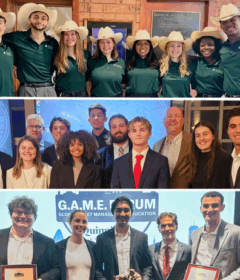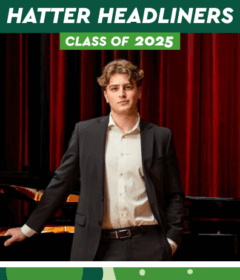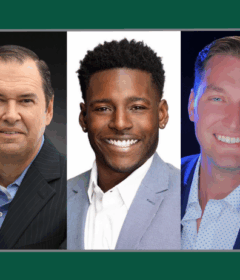5 Minutes with … Joel Bauman
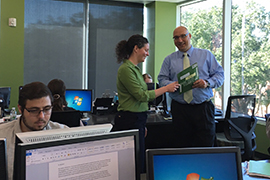
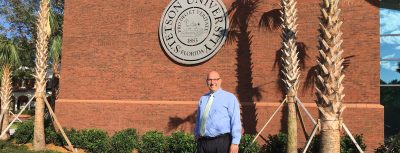
Tell us about your job at Stetson?
I’m the chief enrollment officer and that encompasses not just Admissions, but also Financial Aid, Retention support and now Boundless Education, which is continuing education, K-12 enrichment, and summer programs for high school students to create pipelines and pathways to Stetson.
Admissions is the tip of the iceberg – the 10 percent, and then there’s the 90 percent that’s everything else. Our department is really Stetson’s top cheerleader, the “sales” and recruitment office, and we see ourselves as a talent-scout operation, finding the best talent and students for our distinguished faculty in both undergraduate and graduate programs.
It is a very, very complicated business. We still do the proverbial “high school visits” (over 150 of them), but less and less. The effective tool now is social media and a personal outreach effort to get people to visit the campus. We have bright and talented recruiters and financial aid staff, a robust communication plan (sending over 11 million emails a year), and sophisticated data management systems to help us do this work. Our job is to increase the pool of qualified, successful students who see Stetson University as their first choice school, and, through the Financial Aid office, maintain and increase the number of current students who can continue to afford Stetson University as their first choice school.

How long have you worked here?
I started Aug. 1, 2011, and the first day was a Cabinet Retreat, where they had a two-day retreat about continuing to implement the Strategic Map. That was a great introduction to Stetson and to President Wendy Libby and the Cabinet.
What do you like most about your work?
Move-in Day. “Drop the mike …” because it is so exciting. We know that graduation and happy alumni are really the culmination of our work, if we’ve made a good fit and students graduate, that’s the goal. But Move-in Day is the proximate culmination of our annual work. It’s the real tangible result of all the hard work we’ve done – the counselors, the admissions recruiters. Even more so, I like it most because it’s that moment of great excitement and unlimited opportunity for the students and their families, who are so happy to have found a good match and see a bright future.
What I love about the day-to-day work of my job is it gives me opportunities and challenges to use all my talents, education and knowledge every day. I was trained as an anthropologist, so I get to think about culture and what gives people meaning in a higher education setting and from their education — how we talk about what we do, to both the external audience and internal constituencies, working with people in an organizational culture.
Also, it’s gratifying to be a part of Stetson professionally because I get to make public presentations around the country and be recognized in the industry as contributing to Stetson’s unmatched success. And as the industry has matured, there’s a heck of a lot of information and data sets to work with, so I get to work with really smart people and “massage” and visualize that data to see what actions we need to take to meet our enrollment and revenue goals.
What’s the most important thing you’ve learned while working at Stetson?
The most important thing I’ve learned is that staff, faculty, students and alumni love the place, and how much these different constituencies are dedicated – once they’ve experienced Stetson – to this place, its history, its success and its future. I learned that because people have given their opinions and reacted to the things we do. And not all the constituencies that are dedicated to Stetson’s success are in agreement about what that definition is. So I’ve learned it’s really, really important to do the work of communicating decisions, being transparent, offering information about what we’re doing and why. This institution is so relational. It’s important to know that about Stetson.
I’ve also learned how much the well-being of the institution is tied to external forces. I think one of the things that President Libby and the Strategic Map are addressing is that the campuses, the institution and the community were perhaps more protected in the past from external forces, but since the Great Recession, that’s been a rude awakening. The basic demographics, the quality of education out in the world, the needs of the communities of learners out there – all that has changed. The financial footing of families has changed. So how do we respond to that and that’s something the Strategic Map addresses. But I learned we need to move on these things and not hope they go away.
Where would you like to see Stetson in 10 years?
I would like to see Stetson in 10 years with increased recognition for the quality of its signature academic programs and the outcomes of its students. I would like to see it achieve increased financial capacity to support all the strong academic programming. I would like to see it offering programs, in addition to the strong and growing DeLand campus, at sites all over Florida and the I-4 corridor, and in varied, high quality and state of the art delivery methods.
Bio
Education: Bachelor’s degree in anthropology and biology from the University of Denver; master’s degree and work toward a Ph.D. at New School University in New York.
Hometown: Grew up in Brooklyn, New York
Family: Devoted father to three daughters.

